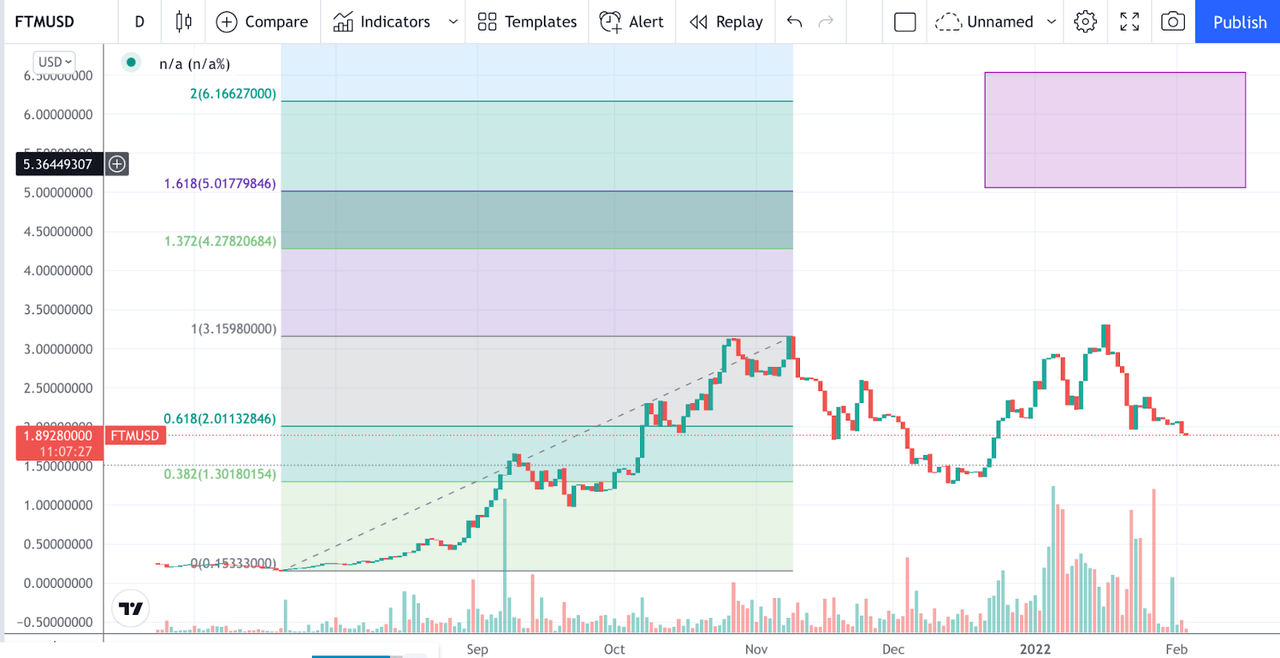AntonioSolano/iStock via Getty Images
Thesis Summary
Fantom (FTM-USD), is a lesser-known cryptocurrency, ranking “only” 29th in terms of market cap, but it has a very compelling technology and a growing ecosystem. A few months ago I compared Fantom and Ethereum (ETH-USD) in this article.
Since then, Fantom has come down with the rest of the market, and more so recently following some “growing pains”. Nonetheless, Fantom is a high conviction altcoin for me, and I expect it to go much higher from here.
Why I like Fantom
Fantom is built on a system called “Lachesis”. This is a single consensus layer that supports the creation of multiple chains. Lachesis uses Directed Acyclic Graph (DAG) based algorithm to achieve asynchronous Byzantine fault tolerance (aBFT). Let’s break this down.
Technology
Through PoS, blocks are created by validators who are staking Fantom. This is not revolutionary, but what is revolutionary is the aBFT protocol, which allows blocks to be created “independently”.
Ultimately, what Lachesis allows is for a more efficient network, completing transactions in an average of one second. This also makes the network more secure. Hypothetically, the blockchain could tolerate up to ⅓ of the validators being “bad actors” without suffering any kind of problem.
The other interesting point here is that, due to the independent nature of the blocks in the Fantom blockchain, Fantom could be said to be more decentralized. Each application on Fantom runs on an independent blockchain, all of which are then plugged into Lachesis. If Ethereum is a decentralized computer, Fantom is like an infinite network of decentralized computers.
Lastly, in terms of smart contract functionality, the Fantom mainnet is hosted by Opera. This open-source platform supports smart contracts written in Solidity that can operate with the Ethereum Virtual Machine. In other words, the Fantom blockchain can “interact” with Ethereum.
Security, Scalability and Decentralization
As explained above, Fantom relies on an aBFT protocol to reach a consensus. aBFT is by nature more scalable as it can handle transactions faster. In theory, the Fantom blockchain can handle around 20,000 tps. If we look deeper into how Fantom works, we can see that each network node contains its own Directed Acyclic Graph (DAG). The DAG is what allows for a “chronology” of blocks to be established, allowing each block to achieve consensus independently. The beauty of Fantom is that it creates a separate blockchain for each application. These blockchains can then interact, but they are independent of each other. Fantom is a network of networks, which makes it a lot more scalable.
In terms of security, Fantom boasts what is referred to as a “leaderless” PoS system. PoS requires people to stake coins to validate blocks. Fantom emphasizes that its system is leaderless, meaning there are no block leaders or special roles. Anyone can join or leave the node network whenever they wish, and all nodes hold equal weight in the consensus protocol. In other words, this prevents centralization. Furthermore, through Lachesis Fantom offers absolute finality. This means that transactions can’t be reverted like in blockchains with probabilistic finality.
Lastly, Fantom is made up of various decentralised blockchains, which we could argue makes it one of the most decentralised platforms out there.
Growing Pains
While on paper Fantom sounds like a great coin, the cryptocurrency has fallen over 30% in the last week following some negative news.
First off, Fantasm Finance, an algorithmic-based asset protocol was hacked, with over $2.6 million worth of crypto taken and converted to Ethereum. The hackers exploited a flaw in the protocol’s code, and this can’t be blamed on the Fantom blockchain, but it still reflects poorly on it.
In other news, the senior solutions architect at Fantom, Anton Nell, suddenly announced that he and the developer Andre Cronje were leaving Fantom and crypto for good. Cronje was also the founder of the popular Yearn finance.
Cronje was a big presence on the DeFi space, and his exit has also sent many tokens on the Fantom network down. Of course, the whole point of DeFi, crypto and Fantom is that we can build a decentralized and trustless network that doesn’t rely on a single individual.
Technical Perspective
I still believe Fantom is a good coin, and my technical analysis also supports higher prices.
EWT Forecast (TradingView)
Using EWT, I believe Fantom is entering a wave 3 rally, having topped in a wave 1 at around $3.15. We have since seen an A-B-C correction take place. The B wave went above the high established last November, but that doesn’t invalidate this count.
Ultimately, we should see Fantom rally to at least $5-6 in the next bull run. I do, however, believe we will see Fantom head lower first, something I discussed more in-depth in my marketplace.
Takeaway
Fantom is one of my highest conviction altcoins. It has great technology, and the technical outlook supports higher prices. The crypto correction isn’t quite over yet, but I’m taking this time to steadily accumulate.
